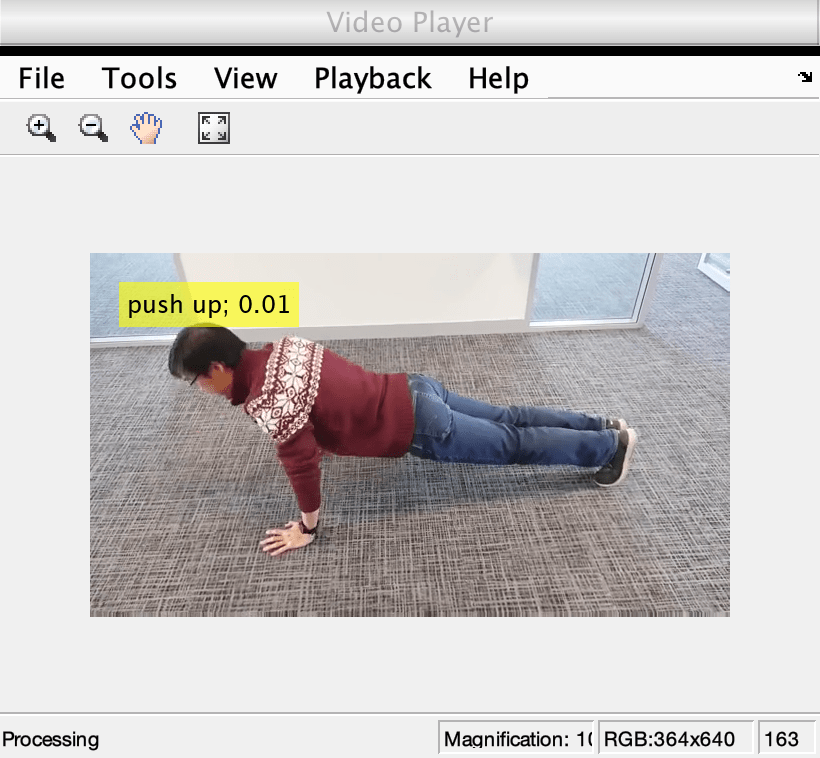updateSequence, updateSequence
Syntax
Description
classifierUpdated = updateSequence(classifier,videoFrame)videoFrame, and outputs
an updated classifier. The output contains the updated classifier object.
To classify the updated sequence, use the classifySequence object function.
The video classifier object maintains the sequence as a first-in first-out (FIFO) queue.
The InputSize property of the classifier object specifies the number of
frames in the queue.
classifierUpdated = updateSequence(classifier,videoFrame,ExecutionEnvironment=env)
"auto"— Sets the execution environment to the GPU, if available. Otherwise the function sets it to the CPU."gpu"— Sets the execution environment to the GPU. Usage of the GPU requires Parallel Computing Toolbox™ and a CUDA® enabled NVIDIA® GPU. For information about the supported compute capabilities, see GPU Computing Requirements (Parallel Computing Toolbox)."cpu"— Sets the execution environment to the CPU.
Examples
Input Arguments
Output Arguments
Version History
Introduced in R2021b
